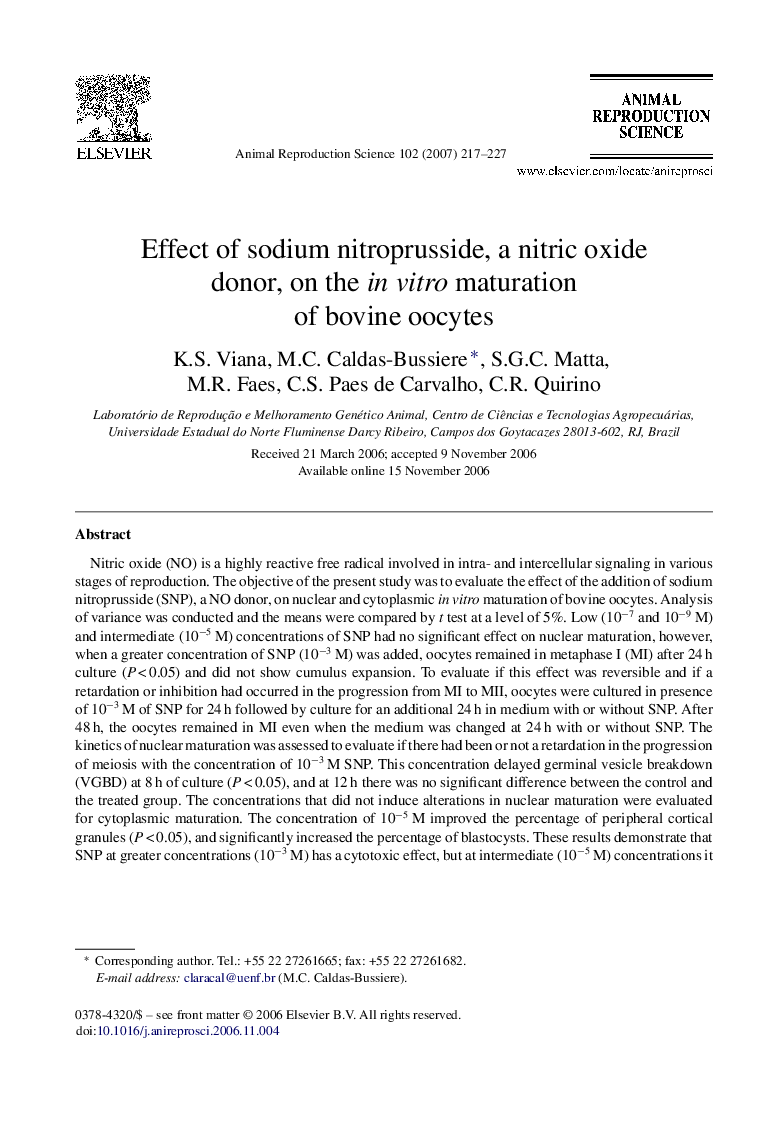| Article ID | Journal | Published Year | Pages | File Type |
|---|---|---|---|---|
| 2074490 | Animal Reproduction Science | 2007 | 11 Pages |
Nitric oxide (NO) is a highly reactive free radical involved in intra- and intercellular signaling in various stages of reproduction. The objective of the present study was to evaluate the effect of the addition of sodium nitroprusside (SNP), a NO donor, on nuclear and cytoplasmic in vitro maturation of bovine oocytes. Analysis of variance was conducted and the means were compared by t test at a level of 5%. Low (10−7 and 10−9 M) and intermediate (10−5 M) concentrations of SNP had no significant effect on nuclear maturation, however, when a greater concentration of SNP (10−3 M) was added, oocytes remained in metaphase I (MI) after 24 h culture (P < 0.05) and did not show cumulus expansion. To evaluate if this effect was reversible and if a retardation or inhibition had occurred in the progression from MI to MII, oocytes were cultured in presence of 10−3 M of SNP for 24 h followed by culture for an additional 24 h in medium with or without SNP. After 48 h, the oocytes remained in MI even when the medium was changed at 24 h with or without SNP. The kinetics of nuclear maturation was assessed to evaluate if there had been or not a retardation in the progression of meiosis with the concentration of 10−3 M SNP. This concentration delayed germinal vesicle breakdown (VGBD) at 8 h of culture (P < 0.05), and at 12 h there was no significant difference between the control and the treated group. The concentrations that did not induce alterations in nuclear maturation were evaluated for cytoplasmic maturation. The concentration of 10−5 M improved the percentage of peripheral cortical granules (P < 0.05), and significantly increased the percentage of blastocysts. These results demonstrate that SNP at greater concentrations (10−3 M) has a cytotoxic effect, but at intermediate (10−5 M) concentrations it increases blastocyst rates. NO exhibits a dual effect on bovine oocytes, inhibits (10−3 M of SNP) nuclear and cytoplasmic maturation or stimulates (10−5 M of SNP) cytoplasmic maturation, depending on concentration in the culture medium.
